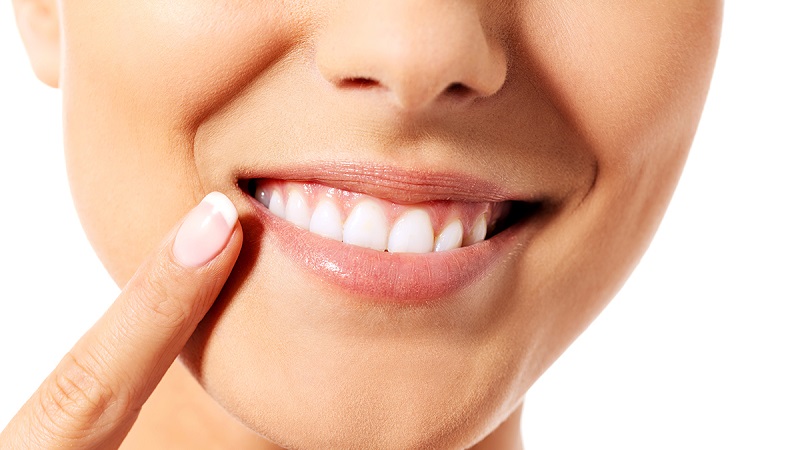Investigating the causes of gum discoloration
In the continuation of this article, Dr. Hossein Borjian's website The best gum surgeon in Isfahan We examine the causes of different types of gum discoloration.
Brown gums
If the gums are not naturally brown, you may have a serious problem. Brown gums can be a sign of caries. Calculus is the accumulation of hardened dental plaque, saliva, minerals, or food particles in the mouth, which turn into calcified deposits.. These deposits can collect under the gum line or on the gum line and appear as yellow to dark brown spots.. flossing And daily brushing is necessary to prevent this situation. If you feel that you have a mass on your gums, it is better to go to the dentist as soon as possible.
A brown or dark blue spot on the gums may indicate that you have oral malignant melanoma, a dangerous type of cancer.. This spot may be accompanied by red, purple or gray colors. These spots can be found anywhere in the mouth and their shape and size will change as they grow. Although oral melanoma is very rare, it can be fatal. If you think you have oral melanoma, you should see a specialist immediately.
Black and natural gums
If you have brown or darker gums depending on your skin pigmentation, then there is nothing to worry about.. Gum color changes like skin color. If you are not white, you may have dark brown gums or notice dark spots on your gums.. This can be caused by increased melanin production in the body, which is completely normal.
As you age, you may notice that your gums are discolored. If the change in color is uniform and you do not experience any other problems such as swelling of the gums, bleeding or pain, this process can be completely normal.. It is always recommended to see a dentist before gum discoloration becomes normal.

Purple gums
Purple gums can indicate gum disease. As gum disease worsens, you may notice that your gums are swollen and bright red or purple in color.. The presence of plaques is the main cause of the disease, which initially irritates the gums and eventually causes deep infections that can destroy tissue and bones.. Maintaining proper oral and dental hygiene is important to prevent gum disease, and if you think you have gum disease, see a dentist as soon as possible..
Purple spots on the gums can also be a sign of Melanoma Oral malignancy, discussed above. If you see purple spots anywhere in the mouth, you should see a specialist as soon as possible.
The Instagram page of Dr. Hossein Borjian, the best gum surgeon in Isfahan
Medicines and smoking
Both medication and smoking can lead to gum discoloration. One of the most common causes of oral pigmentation is a condition called melanosis of smokers. If smokers have melanosis, the gums, cheeks, or roof of the mouth may turn brown or black due to smoking or using tobacco containing nicotine.. Smoking may also lead to gum disease or oral cancer, which can cause the gums to turn purple or brown.. Finally, some medications can also change the color of the gums.
Dr. Hossein Borjian, specialist in gum and bone grafting at Clinic 24
Dr. Hossein Borjian, gum and bone transplant specialist at Dr. Af
Attention :
- The scientific accuracy of the above article should be consulted with Dr. Borjian, a specialist, in person Gum and bone grafting be confirmed.
- This article was managed and published by the site admin.
Read more :
Methods of diagnosis and treatment of dental irregularity
Investigating direct tooth restoration methods



